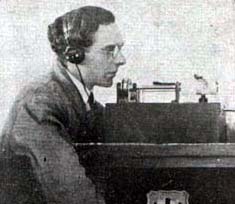Television
Origins of television

The origins of what would become today's television system can be traced back as far as the scanning disk of Paul Nipkow of 1885. All practical television systems use the fundamental idea of scanning an image to produce a time series signal representation which is then transmitted to a device which reverses the scanning process and which relies on the human eye to integrate the result into a coherent image again.
All-electronic televison systems relied on the inventions of Philo Taylor Farnsworth, Vladimir Zworykin and others to produce a system suitable for mass distribution of television programming.
Commercial broadcast programming, starting with experimental broadcasts seen only in a few specially-equipped homes, occurred in both the United States, and the United Kingdom before World War II, but television did not become commonplace in homes until the middle 1950s. While North American over-the-air broadcasting was originally free of direct cost to the consumer and supported primarily by advertising revenue, increasingly television consumers obtain their programming by subscription to cable television systems or direct-to- home satellite transmissions.
Elements of a television

The elements of a simple television system are:
- An image source - this may be a camera for live pick-up of images or a flying spot scanner for transmission of films.
- Accompanying this, a source of sound.
- A transmitter, which modulates one or more radio signals with both picture and sound information for transmission.
- A receiver which recovers the picture and sound signals from the radio broadcast.
- A display device, which turns the electrical signals into visible light and audible sound.
Practical telelvision systems include equipment for selecting different image sources, mixing images from several sources at once, insertion of pre-recorded video signals, synchronizing signals from many sources, and direct image generation by computer for such purposes as station identification. Transmission may be over the air from land-based transmitters, over metallic or optical cables, or by radio from synchronous satellites. Digital systems may be inserted anywhere in the chain to provide better image transmission quality, reduction in transmission bandwidth, special effects, or security of transmission from theft by non-subscribers.